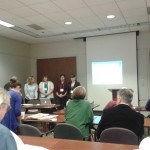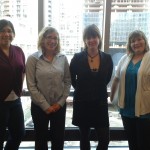There are many new developments going on this summer to spread the Mi’gmaq language. Follow us on instagram, twitter and facebook to stay involved!
Twitter – @learnmigmaq follow word of the day #migmaqwordoftheday
Instagram – @learnmigmaq weekly videos with vocabulary and dialogue in the Mi’gmaq language. Also check out Savvy Simon’s videos on instagram (@msnativewarrior). L’nuisi, it’s that easy!
Listuguj Mi’gmaw Language Club – Weekly conversation group meeting every Thursday at 6pm at the Listuguj Education Directorate. All activities are solely in Mi’gmaq – a great way to practice conversation in Mi’gmaq.
Mi’gmaq Language Summer Workshop 2 – Check out our webpage under the workshop section for more information. This event will take place August 5th at the Listuguj Bingo Hall.
How to get involved
Be a part of our social media team! For Mi’gmaq videos, posts or pictures just use the hashtag #SpeakMikmaq or #SpeakMigmaq



